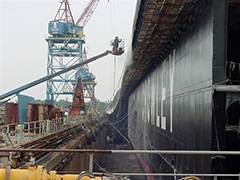Converting Municipal Waste to Renewable Energy Source – Updated Article With Extra Information on Waste to Renewable Energy
Mar 03
What projects are currently in place around the U.S. for converting municipal waste to energy? How is this conversion process accomplished and what have been the measureable beneficial outcomes?

There are two main ways in which waste to energy programs operate. Waste to energy facilities can burn the waste and use the released energy in order to create steam and heat, which is then converted to electricity. Most waste to energy facilities follow this procedure. The waste is sorted right away and recyclable materials are excluded. Even plastics and tires can be turned into energy, and other items like metal cans are put aside. Then the materials chosen for the burning will be put into the incinerator, and the energy released is captured in the form of steam, which creates electricity. The second way in which waste to energy programs operate is to collect methane gas, which the waste releases when it decomposes, but this is not as common.
Waste to energy plants on a commercial scale operate in the U.S., and they range in size from 200 to about 3,000 tons a day. The facility’s processing capacity is a function of various technical considerations, such as the facility’s capital and operating cost and the amount of waste left to be processed after recycling. They also depend on their long-term planning goals, such as domestic alternative energy source benefits, carbon footprint reduction, and stability of disposal costs.
For every converted ton of municipal waste, we can save a barrel of oil or 250 kilograms of coal. Every year in the U.S. there is almost 300 million tons of garbage sent to landfills. If all this waste was converted to energy instead, our dependence on oil could be reduced by 3-4 percent. This is equivalent to thousands of tons of coal and hundreds of thousands oil barrels.
Municipal waste to renewable energy programs also benefit the local economy directly and indirectly. Construction workers hired from the local area by the waste to energy facilities would receive paychecks amounting to millions of dollar annually. The indirect benefits of this are in the millions for the local area. Various goods and services that are construction-related would also be purchased locally, which would, in turn, boost the economy.
For more information on waste to energy, go to:
en.wikipedia.org,
scotland.gov.uk
Related Posts
- Syngas: burning trash and creating energy- updated article
- Electricity Production from Solid Municipal Waste
- Converting Municipal Waste to Renewable Energy Source
- Municipal Solid Waste Generation: Pros and Cons - Updated Article With Extra Information
- Waste Gasification Plants: Turning Waste into Renewable Fuel Source
7 Responses to “Converting Municipal Waste to Renewable Energy Source – Updated Article With Extra Information on Waste to Renewable Energy”
Leave a Reply
You must be logged in to post a comment.





I just read that once the capital costs is paid back – Yorkshire Water’s annual electricity bill will reduce from £50 million to almost nothing! That’s pretty impressive.
October 27th, 2010 at 3:19 pmYorkshire water in the UK is also burning sewage and catching the gases which it then uses to produce electricity! They have great ambitions – Yorkshire Water’s sewage plants are set to become self-sustaining by 2020. Great to hear about such projects!
October 27th, 2010 at 3:18 pm389.5 million tons of waste were produced in the US in 2008. 70% was landfilled, 24% was recycled and composted, and 7% burnt via waste-to-energy.
October 27th, 2010 at 3:15 pmAustralia is getting into the game – A wastewater-treatment plant in southern Australia is going to burn human excrement to make energy! Apparently the energy content of ‘man made fuel’ is very similar to that of wood!
October 27th, 2010 at 3:13 pmSurprise! You really covered this subject well. Hope others feel the same way.
October 25th, 2010 at 1:29 pmPopular, the post is truly the nicest on this worth while subject. I completely agree along with your conclusions and will eagerly appear forward for your future updates. Saying thanks will not just be sufficient, for that extraordinary clarity in your writing. I will instantly grab your rss feed to remain informed of any updates.De lightful operate and a lot success in your business efforts!Thanks.As being a student, I can see you are the Master. I appear forward to operating with you and understanding all that you’ll be able to teach me. Your personal e mail notes to me are appreciated more than you know.
August 28th, 2010 at 9:24 pmHow come we are not doing anything with this on a larger level? There is so much municipal waste laying around that there is plenty of garbage in the landfills to keep us in energy for years.
February 15th, 2009 at 5:21 pm